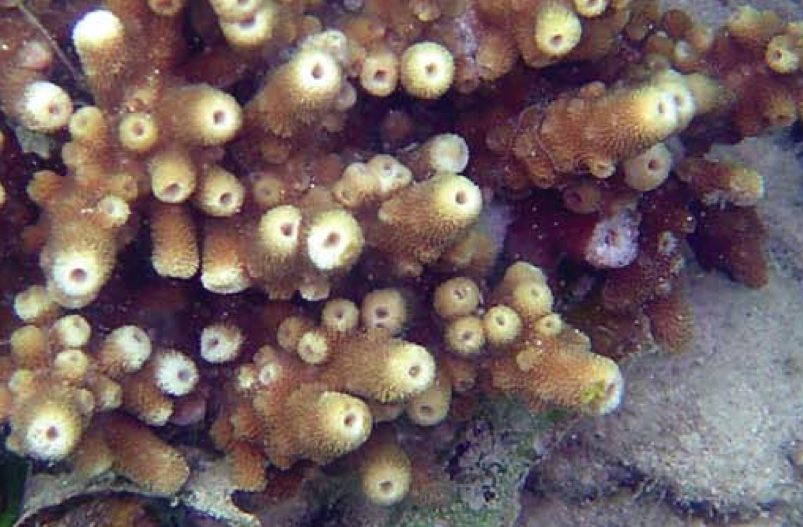The branching Astreopora from Cenderawasih Bay is not alone in its preference of growth form but it’s nothing compared to Astreopora acroporina. If you are a self-professed Acro junkie like ourselves you’ll flip when you see the big honkin’ axial corallite riding the branch tips grown by Astreopora acroporina.
Although most Asteopora are encrusting, massive or submassive in growth form, something about Cenderawasih Bay makes it a hotbed of Astreopora diversity with all but two of the 16 species being found there, including the unusual branching species A. cenderawasih and the Acropora-wannabe Astreopora acroporina.
Astreopora acroporina is not only unique for being a branching species, but the development of the axial corallite is really something special. Most reef aquarium hobbyists are familiar with the hallmark axial corallite tip of Acropora including the closely related Isopora but before A. acroporina came only two other stony coral species were known to have branch whose growth was determined by an axial tip: Cyphastrea decadia and Echinopora fruticulosa.
Although Astreopora acroporina does develop axial-corallite-guide branches there aren’t too many secondary branches so we’re dealing with a roughly hemispherical base and branches sticking out of it. The colonies of Astreopora acroporina described were all from even shallower water than A. cenderawasih at a depth of three to six feet (1-2 meters), evidently among seagrasses as pictured in the photo above.
Carden C. Wallace, Emre Turak & Lyndon DeVantier (2011): Novel characters in a conservative coral genus: three new species of Astreopora (Scleractinia: Acroporidae) from West Papua, Journal of Natural History, 45:31-32, 1905-1924





